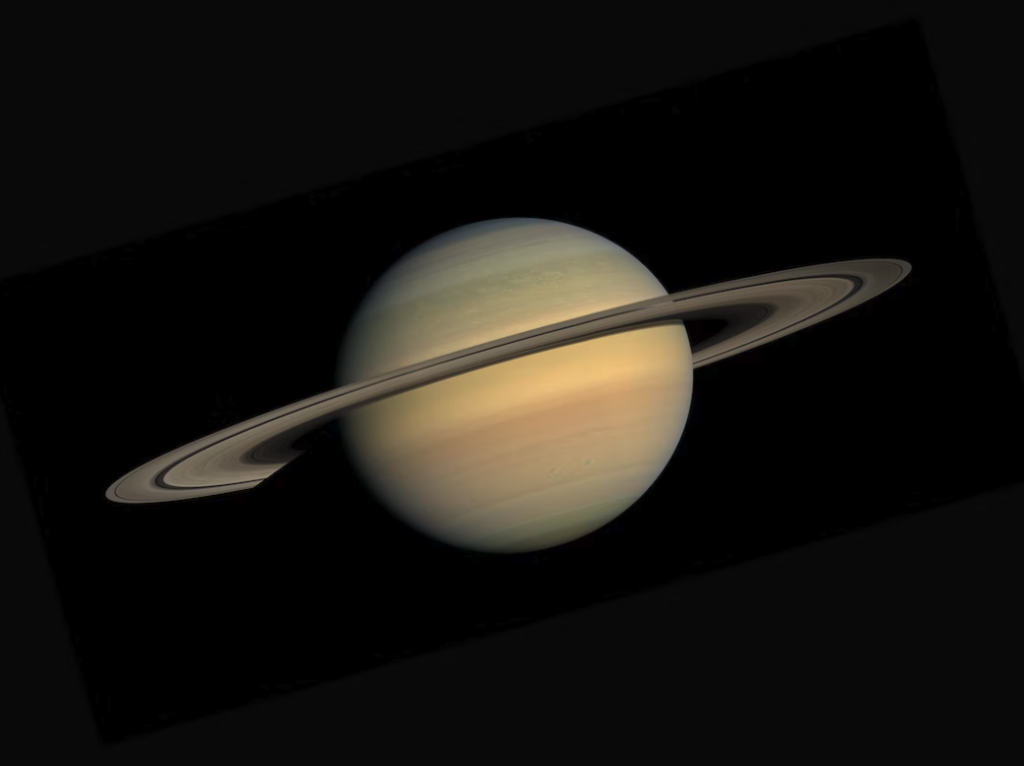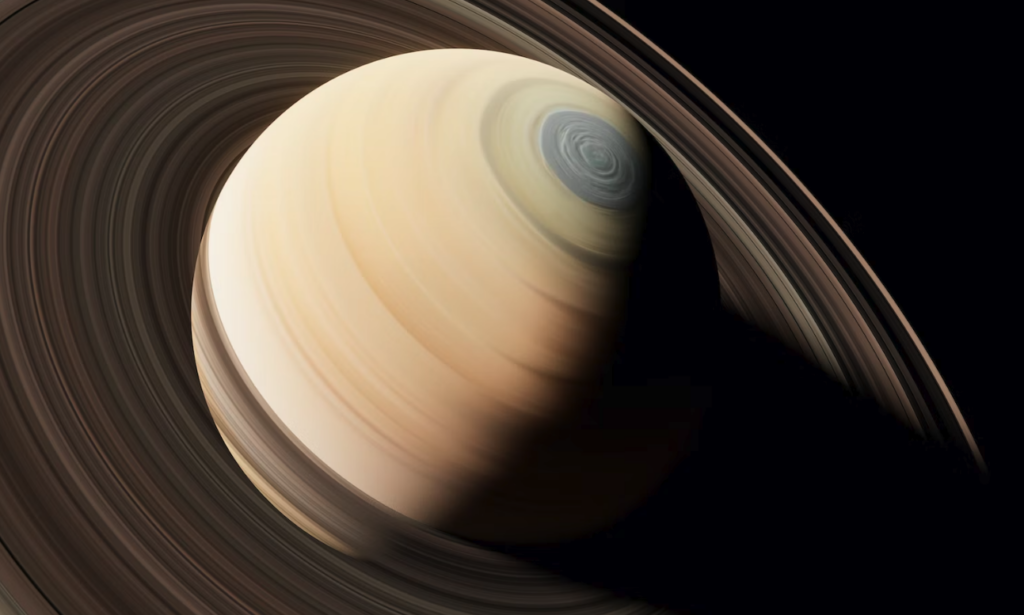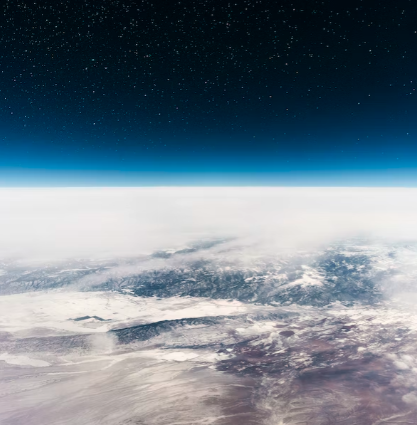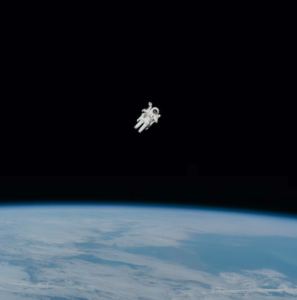How Many Moons Does Saturn Have?
How many moons does Saturn have? The International Astronomical Union (AIUA) has confirmed the existence of sixty-three moons orbiting Saturn. Twenty additional moons have been identified and await discovery confirmation and naming.
After completing the final AIUA moon recognition process, Saturn will have more moons than any other planet in our solar system.

Let’s talk Saturn’s Moons
- Saturn’s moons are visible with a backyard telescope. If you look closely, you should be able to locate six of Saturn’s moons.
- Sixteen moons are tidally locked. The same face of the moon stays oriented toward Saturn at all times. This phenomenon keeps the same side of the Earth’s moon facing the Earth in the same direction.
- Saturn has 83 moons, and Jupiter has 80 moons.
- In 1655, Christiaan Huygens discovered the first known moon of Saturn. Today that moon is called Titan.
- Sir John Frederick William Herschel began naming Saturn’s moons based on Greek Mythology in 1847. The practice continues to this day.
- A newly discovered moon (on any planet) is assigned a provisional name; S/2023 1
- S/2023 1 means: Saturn/year/1st moon discovered in 2023
- M/2024 4 means: Mars/year/4th moon discovered in 2024
- A “name” is given to the moon when it completes the IAU discovery and verification process.
- A newly discovered moon (on any planet) is assigned a provisional name; S/2023 1
What’s so interesting about Saturn’s Moons?
The exploration of Saturn’s moons is an exploration of Earth’s history. The moons listed below are visible with a 6″ telescope.
- Stellar Magnitude is a measure of brightness. The lower the value, the higher the intensity of the brightness. Brighter objects are easier to find in the nighttime skies.
| Saturn Moons | Stellar Magnitude | Min/Max °F | Min/Max °C | Earth Moon % |
| Titan | 9 | (-292) to (-364) | (-220) to (-180) | 48.19% |
| Rhea | 9.7 | (-281) to (-364) | (-220) to (-174) | -43.96% |
| Iapetus | 3.8 | (-226) to (-334) | (-168) to (-108) | -42.28% |
| Dione | 10.4 | (-307) to (-316) | (-193) to (-188) | -32.31% |
| Tethys | 10.3 | (-298) to (-305) | (-187) to (-184) | -69.44% |
| Enceladus | 11.8 | (-262) to (-330) | (-201) to (-128) | -85.49% |
- Min/Max Temperatures. Saturn’s moons are icy. Yet, something strange happens when the temperature data from Iapetus is analyzed!
- Earth Moon %. The size of Saturn’s moon when compared to Earth’s Moon.
- Extend your arm full length.
- Hold your thumb up to the moon.
- The tip of your thumb is approximately the same size as the moon.
- Titan would be roughly the size of a “thumb and a half.”
- Rhea would be around half the size of the tip of your thumb.

How Many Moons Does Saturn Have?
With eighty-three confirmed moons and millions of objects in Saturn’s rings, the moons bring untold opportunities to learn about the history of our solar system.
Titan
Titan is Saturn’s largest and second-largest moon in the solar system. Titan is approximately 48% larger than Earth’s moon. Titan has lakes, rivers, clouds, and oceans composed of liquid methane and ethane (hydrocarbons).
No other (known) planets or moons other than Earth have rivers, lakes, and oceans on their surface. Scientists believe the current atmosphere is similar to Earth’s 3.5 billion years ago.
Atmosphere
Titan is the only moon with a notable atmosphere in the solar system. The Earth’s atmosphere extends 37 miles (59 km) into space. Titans’ atmosphere extends approximately 373 miles (600 km) into space.
Rhea
Rhea resides underneath Saturn’s “E” ring. Saturn’s rings contain shattered moons, asteroids, comets, and frozen water. The objects within each debris ring may be a few microns or the size of a mountain.
Rhea is approximately 44% smaller than Earth’s moon. Rhea was discovered in 1672 by French astronomer Gian Domenico Cassini.
Atmosphere
Rhea has a ring of oxygen approximately 62 miles (100 km) thick. The entirety of Rhea’s atmosphere would fit into a mid-sized building.
Pioneer (1979), Voyager I (1980), Voyager II (1981), and Cassini (2005, 2013) collected gravitational data from Rhea. Gravitation fields play a vital role in understanding a moon’s internal composition. Based on the gravitational data, scientists believe that the core is 75% compressed water and ice and 25% rock.

Tethys
Tethys density measurements reveal 97% water ice and 3% rock.
An enormous trench, or rift zone, named the Ithaca Chasma, runs almost the entire distance from the north pole to the sound pole. Ithaca Chasma is approximately 1200 miles (2000 km) long, 60 miles wide (100 km), and 2-3 miles deep (4-5 km).
Scientists believe (Cassini data) that the water inside Tethys froze and expanded. The expansion caused the moon’s surface to expand and crack, creating the trench.
Dione
Dione is roughly the same distance from Saturn as the moon is from Earth, 234,000 miles (377,400 km).
Generally, the “front” of a moon will run into debris as it orbits around a planet. (Think in terms of a car’s front windshield hitting bugs.) Dione’s “backside” has struck most of the debris and is more cratered than the front side.
Scientists guess that an impact with another moon could have spun the moon 180° backward. (The rearview window is now the front windshield.)
Enceladus: The Ocean Moon
The ice-covered moon is so promising for exploration that NASA will launch an expedition in 2027.
The south pole is warm!
The interior core of Enceladus increases in temperature as the moon responds to the gravitational forces of Saturn.
The warm interior core temperatures created an ocean underneath the frozen surface crust. There is a robust scientific belief that hydrothermal vents reside on the bottom of the Ocean on Enceladus.
Cassini geysers that are ejecting a vapor plume hundreds of miles into space. A portion of the plume falls back to the surface of Enceladus. The other portion of the plume enters into orbit around Saturn in the E-Ring
Cassini flew through the plume of vapor and detected methane, ammonia, nitrogen-bearing organic compounds, oxygen, and carbon. Scientists note that the vapor’s salinity strongly resembles Earth’s ocean salinity.
Iapetus-Three fun facts
Saturn’s most distant moon, Iapetus, has three unusual properties.
- Iapetus orbits Saturn at a plane of 15.5° while the other moons orbit at approximately 1.5° ∓ .5°.
- A ridgeline measuring 12.4 miles (20 km) wide, 8.1 miles (13 km) wide, and 808 miles (1300 km) in diameter wrap around the moon’s equator. The ridgeline runs around the dark side of the equator.
- It’s a two-toned moon. One side is dark, and one side is bright. As a tidally locked moon, Iapetus appears bright and dark from the Earth as it orbits around Saturn.

Wrap-up
Saturn’s moons provide the opportunity to delve into their astrobiological conditions and compare them to Earth’s. When answering the question: how many moons does Saturn have? it is important to explore their underworld oceans, topside seas, rivers, clouds, and geological features because it offers a glimpse of Earth from several billion years ago.
